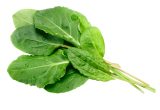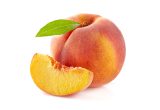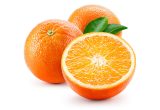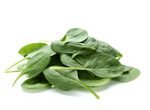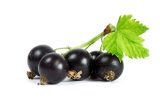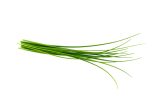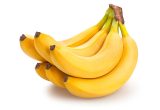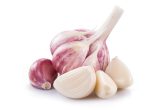Coriander

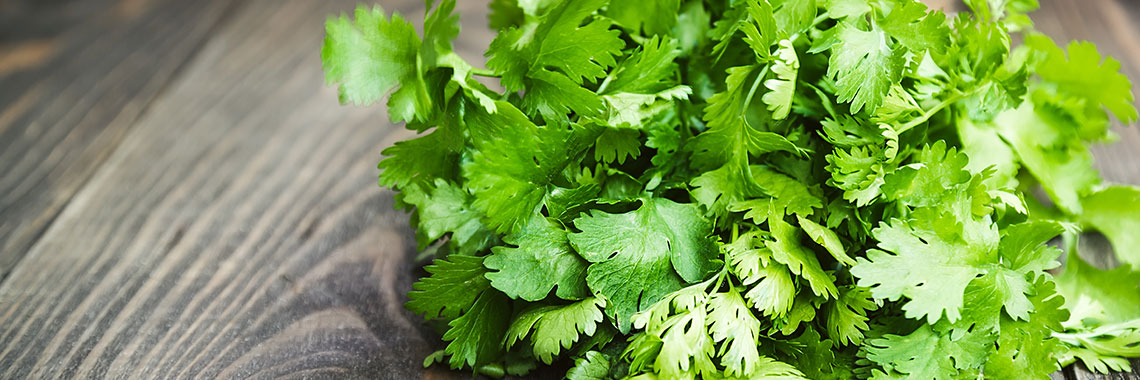
Description
- Coriander (Coriandrum sativum) belongs to the Apiaceae family of the order Apiales which contains about 300 genera and over 3,000 species (Asgarpanag, 2012).
- It is an annual herbaceous plant, native to the eastern Mediterranean, where its use dates back to around 1550 BC (Asgarpanah, 2012).
PHYSICAL AND ORGANOLEPTIC CHARACTERISTICS
- Coriander is a small plant, about 50 cm tall, branched, fragrant, and which has a life span of only three days (Nair, 2013; Kaur, 2018).
- This plant is rich in chlorophyll, a natural pigment that gives it its green colour (Kaur, 2018).
- Coriander leaves are particularly rich in aromatic compounds (Tang, 2013), the main ones being various aldehydes, especially (E)-2-alkenals and n-aldehydes:
- Unsaturated aldehydes (mainly decanal and dodecanal) in coriander are described as fruity, green and pungent;
- (E)-2-alkenals (mainly (E)-2-decenal and (E)-2-dodecenal) are perceived as soapy, greasy, or pungent (Eriksson, 2012).
COMPOSITION CHARACTERISTICS (excluding macronutrients, vitamins and minerals)
- The main bioactive constituents of coriander are volatile aromatic compounds, fatty acids, tocol, sterol and carotenoids. Its different constituents possess varying degrees of antioxidant and antimicrobial activities depending on their content (Wei, 2019).
- The other compounds present in coriander are aldehydes, alcohols, esters and phenols. These compounds have various health benefits such as antibacterial, antimutagenic, antispasmodic, fungicidal, hypoglycemic and hypolipidemic properties (Priyadarshi, 2016).
- Polyphenols in coriander have antioxidant properties that protect cells from oxidative damage (Priyadarshi, 2016):
- Eleven characteristic phenolic compounds have been identified in the leaves. These include caffeic acid derivatives, 5-feruloylquinic acids and 5-p-coumaroylquinic acids (Kaiser, 2013);
- the aerial parts of coriander are particularly rich in apigenin, catechin and p-coumaric acid (Tang, 2013).
- Its high content of lipids, such as petroselinic acid, and volatile aromatic compounds gives coriander beneficial effects on growth and brain function (Khazdair, 2018).
FRESH
The following values are approximate and depend on variety, season, ripeness, cultivation conditions, etc.
Coriander is low in energy* as it provides an average of 22.30 calories (kcal) per 100 g, i.e. 92.60 kJ. However, it is used as a flavouring, meaning such a quantity is rarely consumed. Therefore, for a 5 g portion, coriander contains 1.12 calories (kcal), i.e. 4.63 kJ.
COMPOSITION TABLES For each nutrient, the tables provide information on the content, minimum and maximum values for 100 g of fresh coriander, while the percentage of the Dietary Reference Values (DRVs) is calculated for a 5 g portion. *Regulation (EC) No 1924/2006 of the European Parliament and of the Council of 20 December 2006 on nutrition and health claims made on foods.
MACRONUTRIENTS
| Constituent (g) |
Average content
per 100g |
Min-Max per 100g |
Average content
per 5g |
DRV% * |
|---|---|---|---|---|
| Water | 92,20 | 91,70 - 93,70 | 4,61 | - |
| Fibers | 2,80 | - | 0,14 | - |
| Carbohydrates | 0,87 | - | 0,04 | 0,02 |
| Sugars | 0,87 | - | 0,04 | 0,05 |
| Lipids | 0,52 | 0,43 - 0,59 | 0,03 | 0,04 |
| Saturated fat | 0,014 | - | 0 | 0 |
| Protein | 2,13 | 1,69 - 2,36 | 0,11 | 0,21 |
| Constituent (g) | Amount | Min-Max | DRV% |
|---|---|---|---|
| Water | Ciqual 2020 | - | - |
| Fibers | Ciqual 2020 | - | - |
| Carbohydrates | Ciqual 2020 | - | Règlement (UE) N°1169/2011 du parlement Européen et du conseil du 25 octobre 2011 |
| Sugars | Ciqual 2020 | - | Règlement (UE) N°1169/2011 du parlement Européen et du conseil du 25 octobre 2011 |
| Lipids | Ciqual 2020 | - | Règlement (UE) N°1169/2011 du parlement Européen et du conseil du 25 octobre 2011 |
| Saturated fat | Ciqual 2020 | - | Règlement (UE) N°1169/2011 du parlement Européen et du conseil du 25 octobre 2011 |
| Protein | Ciqual 2020 | - | Règlement (UE) N°1169/2011 du parlement Européen et du conseil du 25 octobre 2011 |
Zoom on carbohydrates
- The amount of carbohydrates provided by a 5 g portion of coriander is 0.04 g.
- This content corresponds to 0.87 g per 100 g, which is well below the average amount found in aromatic herbs: approximately 7.85 g per 100 g.
- Coriander is low in sugar* (0.87 g per 100 g) as it contains no more than 5 g per 100 g.
Zoom on fibres
- For one serving of coriander (5 g), the amount of fibre is 0.14 g.
- The fibre content of coriander (2.80 g per 100 g) is significant, even though it remains below the average amount found in aromatic herbs (6 g per 100 g).
Zoom on proteins
- For a 5 g serving, coriander contains 0.11 g of protein.
- The protein content in 100 g of coriander (2.13 g) is lower than the average amount found in aromatic herbs (4.22 g per 100 g).
Zoom on lipids
- Coriander contains 0.03 g of fat in a 5 g serving.
- This quantity corresponds to 0.52 g per 100 g, which is lower than the average amount found in herbs (1.18 g per 100 g).
- Coriander is low in fat* as it contains less than 3 g per 100 g.
*Regulation (EC) No 1924/2006 of the European Parliament and of the Council of 20 December 2006 on nutrition and health claims made on foods.
MINERALS AND TRACE ELEMENTS
| Constituent |
Average content
per 100g |
Min-Max per 100g |
Average content
per 5g |
DRV% * |
|---|---|---|---|---|
| Calcium (mg) | 67 | 50 - 84 | 3,35 | 0,42 |
| Chloride (mg) | - | - | - | - |
| Copper (mg) | 0,23 | 0,19 - 0,26 | 0,01 | 1,15 |
| Iron (mg) | 1,77 | 0,58 - 2,78 | 0,09 | 0,63 |
| Iodine (µg) | - | - | - | - |
| Magnesium (mg) | 26 | 18 - 35 | 1,30 | 0,35 |
| Manganese (mg) | 0,43 | 0,37 - 0,48 | 0,02 | 1,08 |
| Phosphorus (mg) | 48 | 36 - 61 | 2,40 | 0,34 |
| Potassium (mg) | 521 | 436 - 584 | 26,05 | 1,30 |
| Selenium (µg) | - | - | - | - |
| Sodium (mg) | 46 | 28 - 64 | 2,30 | - |
| Zinc (mg) | 0,50 | 0,49 - 0,51 | 0,03 | 0,25 |
| Constituent | Amount | Min-Max | DRV% |
|---|---|---|---|
| Calcium (mg) | Ciqual 2020 | - | Règlement (UE) N°1169/2011 du parlement Européen et du conseil du 25 octobre 2011 |
| Chloride (mg) | Ciqual 2020 | - | Règlement (UE) N°1169/2011 du parlement Européen et du conseil du 25 octobre 2011 |
| Copper (mg) | Ciqual 2020 | - | Règlement (UE) N°1169/2011 du parlement Européen et du conseil du 25 octobre 2011 |
| Iron (mg) | Ciqual 2020 | - | Règlement (UE) N°1169/2011 du parlement Européen et du conseil du 25 octobre 2011 |
| Iodine (µg) | Ciqual 2020 | - | Règlement (UE) N°1169/2011 du parlement Européen et du conseil du 25 octobre 2011 |
| Magnesium (mg) | Ciqual 2020 | - | Règlement (UE) N°1169/2011 du parlement Européen et du conseil du 25 octobre 2011 |
| Manganese (mg) | Ciqual 2020 | - | Règlement (UE) N°1169/2011 du parlement Européen et du conseil du 25 octobre 2011 |
| Phosphorus (mg) | Ciqual 2020 | - | Règlement (UE) N°1169/2011 du parlement Européen et du conseil du 25 octobre 2011 |
| Potassium (mg) | Ciqual 2020 | - | Règlement (UE) N°1169/2011 du parlement Européen et du conseil du 25 octobre 2011 |
| Selenium (µg) | Ciqual 2020 | - | Règlement (UE) N°1169/2011 du parlement Européen, et du conseil du 25 octobre 2011 |
| Sodium (mg) | Ciqual 2020 | - | - |
| Zinc (mg) | Ciqual 2020 | - | Règlement (UE) N°1169/2011 du parlement Européen et du conseil du 25 octobre 2011 |
Zoom on minerals and trace elements
- For a 5 g portion, the minerals and trace elements are present in coriander in quantities representing less than 2% of DRVs.
VITAMINS
| Constituent |
Average content
per 100g |
Min-Max per 100g |
Average content
per 5g |
DRV% * |
|---|---|---|---|---|
| Provitamin A Beta-carotene (µg) | 3 930 | 1990 - 4800 | 196,50 | - |
| Vitamin A equivalent (µg) | 655 | 331,67 - 800 | 32,75 | 4,09 |
| Vitamin B1 (mg) | 0,067 | 0,025 - 0,10 | 0 | 0,30 |
| Vitamin B2 (mg) | 0,16 | 0,12 - 0,23 | 0,01 | 0,57 |
| Vitamin B3 (mg) | 1,11 | 0,73 - 1,37 | 0,06 | 0,35 |
| Vitamin B5 (mg) | 0,57 | 0,54 - 0,61 | 0,03 | 0,48 |
| Vitamin B6 (mg) | 0,15 | 0,12 - 0,18 | 0,01 | 0,54 |
| Vitamin B9 (µg) | 62 | - | 3,10 | 1,55 |
| Vitamin C (mg) | 27 | 10,50 - 52,50 | 1,35 | 1,69 |
| Vitamin E (mg) | 2,50 | - | 0,13 | 1,04 |
| Vitamin K1 (µg) | 310 | - | 15,50 | 20,67 |
| Constituent | Amount | Min-Max | DRV% |
|---|---|---|---|
| Provitamin A Beta-carotene (µg) | Ciqual 2020 | - | - |
| Vitamin A equivalent (µg) | Calcul à partir de la valeur Provitamine A Béta-carotène* | - | Règlement (UE) N°1169/2011 du parlement Européen et du conseil du 25 octobre 2011 |
| Vitamin B1 (mg) | Ciqual 2020 | - | Règlement (UE) N°1169/2011 du parlement Européen et du conseil du 25 octobre 2011 |
| Vitamin B2 (mg) | Ciqual 2020 | - | Règlement (UE) N°1169/2011 du parlement Européen et du conseil du 25 octobre 2011 |
| Vitamin B3 (mg) | Ciqual 2020 | - | Règlement (UE) N°1169/2011 du parlement Européen et du conseil du 25 octobre 2011 |
| Vitamin B5 (mg) | Ciqual 2020 | - | Règlement (UE) N°1169/2011 du parlement Européen et du conseil du 25 octobre 2011 |
| Vitamin B6 (mg) | Ciqual 2020 | - | Règlement (UE) N°1169/2011 du parlement Européen et du conseil du 25 octobre 2011 |
| Vitamin B9 (µg) | Ciqual 2020 | - | Règlement (UE) N°1169/2011 du parlement Européen et du conseil du 25 octobre 2011 |
| Vitamin C (mg) | Ciqual 2020 | - | Règlement (UE) N°1169/2011 du parlement Européen et du conseil du 25 octobre 2011 |
| Vitamin E (mg) | Ciqual 2020 | - | Règlement (UE) N°1169/2011 du parlement Européen et du conseil du 25 octobre 2011 |
| Vitamin K1 (µg) | Ciqual 2020 | - | Règlement (UE) N°1169/2011 du parlement Européen et du conseil du 25 octobre 2011 |
Zoom on vitamins
- Coriander is a source of vitamin K1, as it provides the equivalent of 20.67% of DRVs, i.e. 15.50 µg for a 5 g portion.
- The other vitamins are present in quantities representing less than 5% of DRVs for a 5 g portion.
*Beta Carotene / 6 + retinol
POLYPHENOLS
| Constituent (mg) |
Average content
per 100mg |
Min-Max per 100mg |
Average content
per 5mg |
|---|---|---|---|
| Flavonoids (mg) | 2,50 | 0 - 5 | 0,13 |
| of which Flavonols (mg) | 2,50 | 0 - 5 | 0,13 |
| Phenolic Acids (mg) | 39,74 | 39,74 - 39,74 | 1,99 |
| of which Hydroxybenzoic acids (mg) | 11,69 | 11,69 - 11,69 | 0,58 |
| of which Hydroxycinnamic acids (mg) | 28,05 | 28,05 - 28,05 | 1,40 |
| Total polyphenols | 42,24 | 39,74 - 44,74 | 2,11 |
| Constituent (mg) | Amount | Min-Max |
|---|---|---|
| Flavonoids | Phénol-Explorer version 3.6 Méthode utilisée : chromatographie après hydrolyse | - |
| of which Flavonols | Phénol-Explorer version 3.6 Méthode utilisée : chromatographie après hydrolyse | - |
| Phenolic Acids | Phénol-Explorer version 3.6 Méthode utilisée : chromatographie après hydrolyse | - |
| of which Hydroxybenzoic acids | Phénol-Explorer version 3.6 Méthode utilisée : chromatographie après hydrolyse | - |
| of which Hydroxycinnamic acids | Phénol-Explorer version 3.6 Méthode utilisée : chromatographie après hydrolyse | - |
| Total polyphenols | Phénol-Explorer version 3.6 Méthode utilisée : chromatographie après hydrolyse | - |
Zoom on polyphenols
- Polyphenols are substances with an antioxidant effect.
- The polyphenols in coriander are mainly phenolic acids, predominantly hydroxycinnamic acids (66% of total polyphenols).
Nutrition and health claims
According to the definitions of nutrition claims as presented in Regulation (EC) No 1924/2006 on nutrition and health claims, and in view of the composition of coriander, the following claims may be used:
NUTRITION CLAIMS OF CORIANDER
- Low in energy (100 g of coriander provide less than 40 kcal)
- Low in sugar (100 g of coriander contain less than 5 g of sugars)
- Low in fat (100 g of coriander contain less than 3 g of fat)
- Source of vitamin K1 (5 g of coriander provide the equivalent of more than 15% of DRVs)
HEALTH CLAIMS (for a consumption of 5 g of coriander)
Vitamin K1
- Vitamin K1 contributes to:
- maintenance of normal bones,
- normal blood clotting.
References
-
Agence nationale de sécurité sanitaire de l’alimentation, de l’environnement et du travail. Table de composition nutritionnelle des aliments Ciqual 2020. Consultée le 20/08/2020 depuis le site internet Ciqual https://ciqual.anses.fr/
- Asgarpanah J, Kazemivash N. Phytochemistry, pharmacology andmedicinal properties of Coriandrum sativum L. African J Pharm Pharm. 2012; 6: 2340–5.
- Eriksson N, Wu S, Do CB, Kiefer AK, Tung JY, Mountain JL, Hinds DA, Francke U. A genetic variant near olfactory receptor genes influences cilantro preference. Flavour. 2012; 1:22
- Kaiser A, Kammerer DR, Carle R. Impact of blanching on polyphenol stability and antioxidant capacity of innovative coriander (Coriandrum sativum L.) pastes. Food Chem. 2013;140(1-2):332-9.
- Kaur G, Kaur P, Kaur A. Physico-chemical properties, bioactive compounds and color parameters of coriander puree: effect of pretreatments and freezing. Journal of Food Science and Technology. 2018;55(9): 3473–84.
- Khazdair MR, Anaeigoudari A, Hashemzehi M, Mohebbati R. Neuroprotective potency of some spice herbs, a literature review.Journal of Traditional and Complementary Medicine. 2018;9(2): 98–105.
- Nair V, Singh S, Gupta YK. Anti-granuloma activity of Coriandrum sativum in experimental models. J Ayurveda Integr Med. 2013;4(1):13-8.
- Neveu V, Perez-Jiménez J, Vos F, Crespy V, du Chaffaut L, Mennen L, Knox C, Eisner R, Cruz J, Wishart D, Scalbert A. (2010) Phenol-Explorer: an online comprehensive database on polyphenol contents in foods. Database, doi: 10.1093/database/bap024. Full text (free access)
- Priyadarshi S, Khanum H, Ravi R, Borse BB, Naidu MM. Flavour characterisation and free radical scavenging activity of coriander (Coriandrum sativum L.) foliage. Journal of Food Science and Technology. 2016;53(3): 1670–8.
- Règlement (CE) N° 1924/2006 du Parlement européen et du Conseil du 20 décembre 2006 concernant les allégations nutritionnelles et de santé portant sur les denrées alimentaires.
- Règlement (UE) N°432/2012 de la Commission du 16 mai 2012 établissant une liste des allégations de santé autorisées portant sur les denrées alimentaires, autres que celles faisant référence à la réduction du risque de maladie ainsi qu’au développement et à la santé infantiles.
- Règlement (UE) n°1169/2011 du Parlement européen et du Conseil du 25 octobre 2011 concernant l’information des consommateurs sur les denrées alimentaires, modifiant les règlements (CE) n°1924/2006 et (CE) n°1925/2006 du Parlement européen et de Conseil et abrogeant la directive 87/250/CEE de la Commission, la directive 90/496/CEE du Conseil, la directive 1999/10/CE de la Commission, la directive 200/13/CE du Parlement européen et du Conseil, les directives 2002/67/CE et 2008/5/CE de la Commission et le règlement (CE) n°608/2004 de la Commission.
- Tang EL, Rajarajeswaran J, Fung SY, Kanthimathi MS. Antioxidant activity of Coriandrum sativum and protection against DNA damage and cancer cell migration. BMC Complement Altern Med. 2013;13:347.
- Wei J-N, Liu Z-H, Zhao Y-P, Zhao L-L, Xue T-K, Lan Q-K. Phytochemical and bioactive profile of Coriandrum sativum L. Food Chemistry. 2019;286: 260–7.



